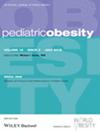There is limited evidence on how changes in obesity from childhood to adolescence are associated with adolescent mental health. We examined the associations between childhood obesity trajectories, obesity episodes, and mental health at age 17.
Data were from the UK Millennium Cohort Study. Obesity trajectory groups at ages 7 and 17 (n = 8306) and previous obesity episodes (number of sweeps with obesity) at ages 7, 11 and 14 (n = 7246) were examined. Caregiver and self-reported internalising and externalising symptoms at age 17 were used to measure mental health. Linear regression models were used.
Relative to never developing obesity, obesity development (β = 1.01; 95% CI = 0.71, 1.32) and persistence (β = 1.18; 95% CI = 0.74, 1.61) were associated with higher internalising symptoms at age 17 and worsening (increase in scores) of these symptoms between ages 7 and 17 (β = 0.87; 95% CI = 0.57, 1.17 and β = 0.86; 95% CI = 0.56, 1.26 for development and persistence, respectively). Obesity development was associated with higher externalising symptoms at age 17 (β = 0.52; 95% CI = 0.25, 0.80) and worsening of these symptoms over time (β = 0.30; 95% CI = 0.07, 0.53). Having multiple past obesity episodes was not associated with worsening mental health independent of follow-up weight status. There were no differences in mental health outcomes between children who reversed versus never developed obesity.
Obesity development or persistence from ages 7 to 17 are associated with worsening mental health. If childhood obesity is reversed, there appears to be no evidence of a negative association between previous obesity and mental health at age 17.


